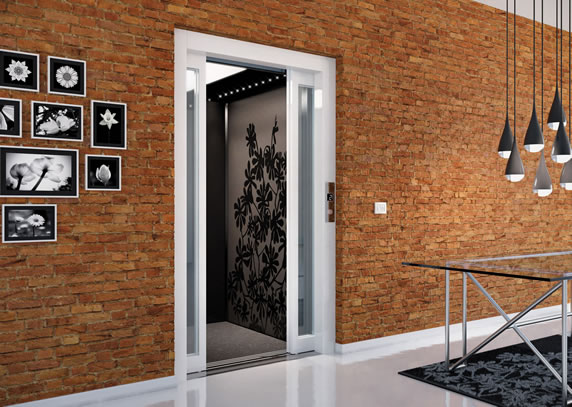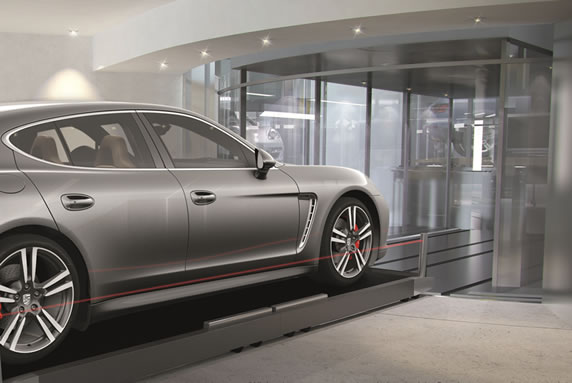The majority of high-rise buildings being built throughout the world today have been designed either entirely for residential or a combination of residential and commercial occupancies. This is due to the high demand for additional living space in most major cities caused by a number of factors. These include a significant move of the current generation of business professionals into city centers as well as the aging senior citizen population that appears to want to live close to the amenities and healthcare facilities that they need on a daily basis. The result of this demographic shift back into the major city centers has caused a high demand for new residential spaces to be developed and it appears that this trend will continue for some time to come.
Developers Mix Things Up
In most U.S. cities major mixed-use buildings are a relatively new phenomenon. Although large apartment buildings have often had ground-floor retail spaces, it wasn’t until the 1970s when cities like New York gave substantial zoning bonuses for buildings that contained a generous mix of amenities that fulfilled the mantra that “variety is the spice life,” and this started a craze that continues to this day.
These high-rise properties quickly became known as mixed-use buildings. Initially, there were some doubters about the success of these projects due to extra costs that would be incurred for these buildings to have separate office and residential entrance lobbies and elevators. Additionally it was felt by some developers that potential residential unit buyers might not like to mingle with office workers, shoppers and/or hotel occupants. However, the boutique retail outlets, stores like Whole Foods and hotel amenities that are now incorporated into mixed-use buildings have instead become attractions for apartment and condo residents.
Today, very few high-rise buildings are being built to contain only commercial occupancies while multi-purpose commercial/residential buildings are sprouting up throughout the world. In view of this, it is appropriate for us to consider how a high-rise building’s elevator system must be planned and designed to properly and most effectively respond to high-rise building residential traffic patterns and building occupant’s needs.
The Science of Avoiding Gridlock
Predominant traffic patterns in high-rise residential buildings are two-way. This two-way traffic occurs during the week with slight downward peaks in the early morning and upward traffic during the evening as some residents go to and return from work. On weekends and holidays two-way traffic is usually light but consistent throughout most of the day. Residential building elevator systems must be designed in response to these varying traffic patterns.

Elevator manufacturers are offering custom finishes in residential elevator cars including wooden paneling, glass, decorative metal and lightweight stone, designed to complement residential decor. Photo Credit: IGV Group SpA
As a result of the specific traffic patterns and lower per square footage occupancies of residential buildings elevator cars serving these areas of a building can be designed to carry less people per trip than in office buildings. However there are also some additional specific issues that need to be considered in residential buildings. Among these are the need for elevators to be able to accommodate the moving of furniture and appliances into and out of buildings along with the ability to provide service to and from below grade automobile parking and storage areas.
Security issues must also be considered in these buildings and elevator systems may have to be designed to accommodate building specific communication and surveillance systems as well. Elevator systems in downtown residential buildings should be provided with elevator cars with a minimum capacity of 2,500 pounds and door openings of a minimum of 42 inches in width. Inside car heights can vary to match the interior car design however at least one service elevator serving all residential floors in the building should be of a larger capacity and a higher interior car height to readily accommodate the moving of furniture and rolls of carpeting. This service elevator capacity should be either 3,500 or 4,000 pounds.
Residential elevator systems should be able to handle 5-7 percent of the building population in a five-minute time period while providing waiting times of between 40-60 seconds. Building occupancies will vary with the type of residential building that is being developed however these can range between 1.25 to 1.5 people per bedroom for senior citizen housing, 1.5 to 1.75 people per bedroom for middle income rental apartment buildings and 1.0 to 2.0 people per bedroom for luxury residences and condominiums (Strakosch, 2010).
Finish With a Flourish
Luxury apartment elevators with interiors and entrances designed by world-renowned interior designers and famous artists are being installed in multilevel, high-rise living spaces. To facilitate this market in the U.S., Italian elevator company IGV Group, SpA of Milan, Italy recently opened a luxury residential elevator in Miami to display a large selection of high-end elevator car designs. These residential elevators feature custom interior finishes and even Swarovski design elements.
Luxury apartment elevators with interiors and entrances designed by world-renowned interior designers and famous artists are being installed in multilevel, high-rise living spaces. Photo Credit: IGV Group SpA
Traditionally residential elevators in the US have only been available with manually operated swing type doors, collapsible car gates and a limited number of standard finishes. However today IGV and other manufacturers are offering luxury car and hoistway enclosures as well as custom made wooden paneling, glass, decorative metal and lightweight stone finishes. They can also have automatically operating car and landing doors and interior car finishes that are designed to match and complement residential decors.
ThyssenKrupp Elevator is also able to match elevator finishes to individual residential units. At the 27-story Turnberry Tower luxury condominiums in Arlington, Virginia, ThyssenKrupp installed elevators that double as residents’ front doors. Most owner’s hall elevator fixtures have been customized to match the style chosen for their personal living rooms.
The elevators also feature security that allows key fob access to either the front or rear entrance of a given car at a given floor. When a resident swipes the fob, the elevator car only goes to their floor and opens into their personal living space. The button in their living room only calls their car, and once called, the car expresses to the lobby without stopping at any other floor.
The Fonz Would Approve
Perhaps the ultimate sky-high living experience will soon be on the horizon in Miami, Florida. The $560 million Porsche Design Tower, currently under construction, will provide luxurious residential accommodations that will include automobile parking for its residents. But rather than parking on below-grade decks, as is usually the case in high-rise buildings, residents will park immediately adjacent to their apartments in what are being called Sky Garages.
The 57-story Porsche Design Tower will have three dedicated elevators specifically built to transport residents, sitting in the comfort of their automobiles, from the building’s automobile entrance directly up to their private Sky Garages. While the resident remains seated in his car, a robotic system loads the vehicle into the elevator where it’s lifted directly to the resident’s garage. During the trip, glass enclosed elevator cars and the hoistways will provide panoramic views of Miami.
Michael Chavez, Chief Elevator Inspector of Miami Dade County, Florida whose department is responsible for the approval of the elevator installation and will be performing the final inspections of the elevator system said, “Numerous innovative safety features and precautions have been included in the automobile elevator design. Since all of the apartments in the building are duplex units the elevators will be serving every other floor and the elevator cars will lock into the building prior to discharging the vehicles.”

Multiple security features have been built-in to the Porsche Design Tower’s car lift system. Laser beams will sense if passengers open their car door during transport and will automatically stop and return to the entry level where a concierge will investigate the situation. Rendering courtesy Porsche Design Group and Dezer Development
According to Chavez, multiple security features have been built-in to the car lift system. “Laser beams installed in the elevators will sense if passengers exit their cars when the elevators are in motion,” he said. “If a laser beam is interrupted the elevator will automatically stop and return to the entry level where a concierge will investigate the situation and instruct the passengers to remain in their vehicles throughout the entire elevator trip.”
“You don’t have to leave your car until you are in front of your apartment,” added Juergen Gessler, chief executive officer of Porsche Design Group, which is partnering with local developer Gil Dezer to create the structure. “Special parking alcoves will be visible from the apartments, so people with fancy cars will have a really nice view of them.”
Though most may never contain the extravagant frills of Porsche Design Tower, tall residential buildings are being constructed at an astonishing rate in cities worldwide. Buyers are willing to pay unprecedented sums of money to live in them, but for the trend to continue, designers and engineers will need to keep refining and improving customized high-performance lifts for this new wave of city dwellers.
Robert S. Caporale, MSc
Robert S. Caporale is the Vertical Transportation Editor for High Rise Facilities. He has over 50 years of experience in the Building Vertical Transportation industry working as a VT System Designer, Certified Elevator Inspector (QEI) and as the Editor of Elevator World Magazine.

